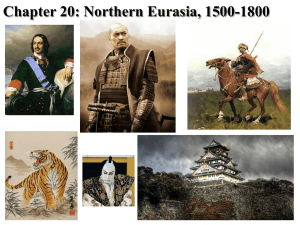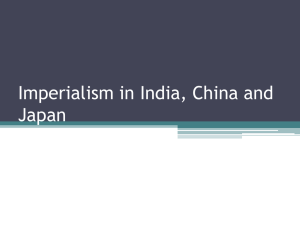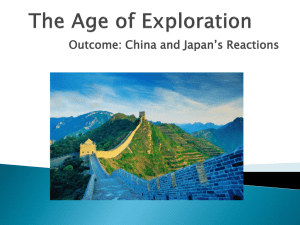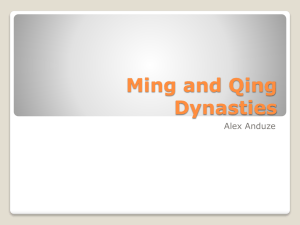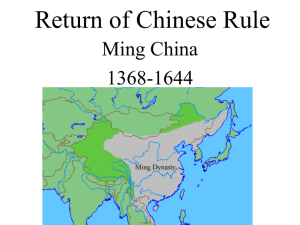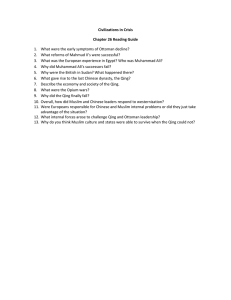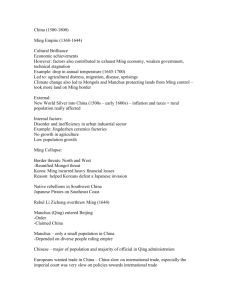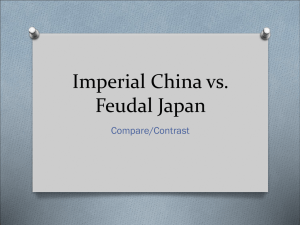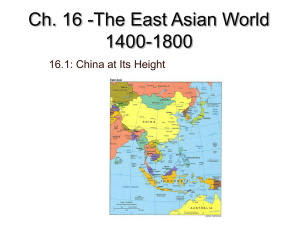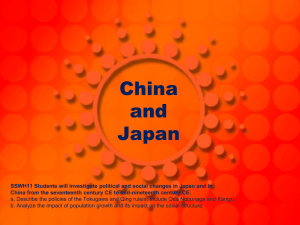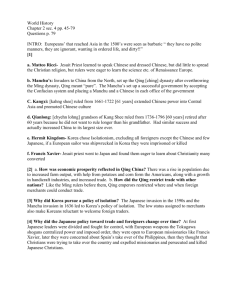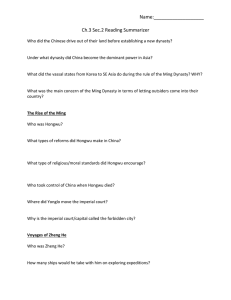4. Ming-Qing
advertisement
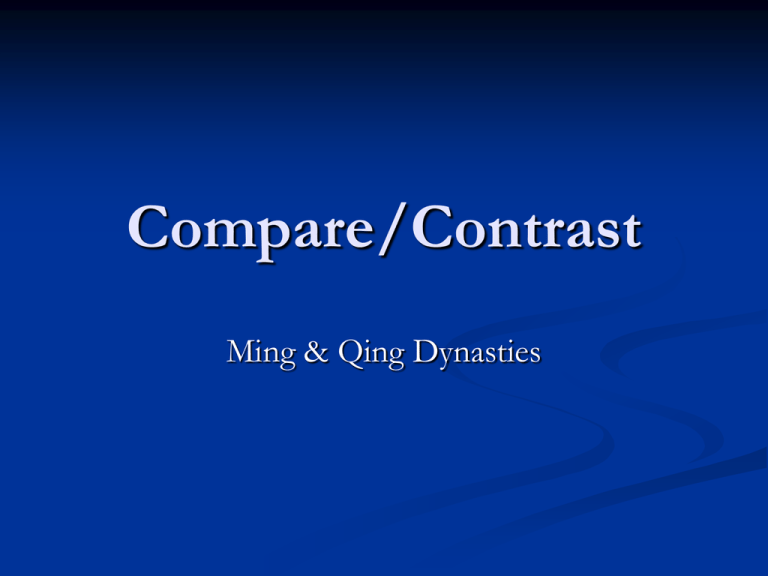
Compare/Contrast Ming & Qing Dynasties Ming Hong wu – Chinese exploration – Zheng He – Government sponsored projects Beijing Forbidden City – Foreign policy - Qing Manchus – Queue – Portugese Jesuits – Taiping rebellion - Similarities 1. 2. 3. 4. Built strong central governments Agricultural and publics works projects Population increased Both ruled for approximately 300 years Hong wu – military officer of peasant origins; who became 1st Ming emperor in 1368; also a Buddhist monk Chinese exploration – government spent money on a navy & junks to sail to foreign ports to collect tribute Zheng He – Chinese Muslim explorer who led seven voyages of exploration to Arabia, India, & Africa; used force if tribute was refused Agricultural and public works projects were completed Ming Zheng He Ming Beijing – (northern capital) new capital of the Ming dynasty Forbidden City – Beijing home of the emperor that was built as a palace and for state functions Foreign policy was based on collecting tribute instead of waging war No longer under control of Mongol leaders Manchus – invaders from Manchuria who set up the Qing dynasty; were out numbered 30-1 Queue – braid required by the Qing leaders to be cut off or be executed; it was a form of control Portuguese – 1st Europeans to arrive in China; built a trading base at Macao Jesuits – missionaries who came to convert the Chinese to Christianity; eventually forced to leave China Taiping rebellion – revolt led by Chinese Christian that lasted for 14 years; foreign influence and power increased as a result of the weakened Qing government Qing
